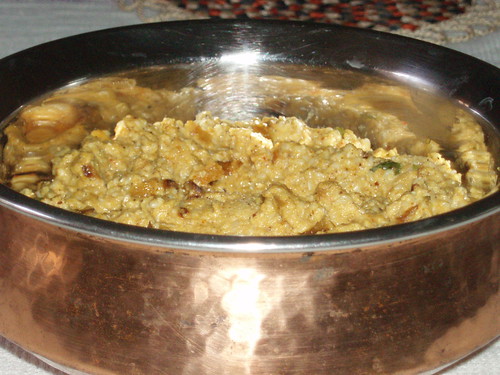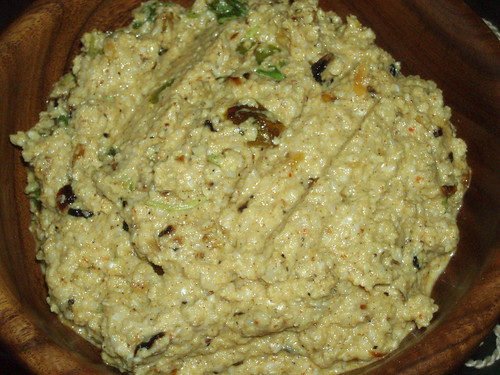After checking images on the Internet, I’ve come to the conclusion it’s pearl barley I used, though the pack didn’t say so. Pearl barley is a processed form of the grain, with the husk and more components (and so nutrients) removed, but I get the impression it’s still a better alternative to rice and wheat. (My barley was white enough for me to believe it was processed.) There’s more information here and here.
In any case, it doesn’t go down as easily as rice or roti, so there must be some truth that it’s healthier – the path of logic proceeding from the point that whatever’s yummy is bad for you and whatever’s not so tasty is good for you!
A recent visit to the restaurant again hastened me into buying some barley and experimenting with it. I didn’t put too many elements in it as it was the first time and I wasn’t sure how long it would take to cook and how well it would absorb the flavours. The result was a tasty and mild dish that looked pretty with all the raisins and almonds that I used to give it some crunch.
Pearl barley – 1 cup
Water – 4-5 cups
Bay leaf – 1
Cinnamon – 2-inch piece
Cloves – 2
Cardamom – 1
Onion, chopped – ½
Green chillies, chopped – 2
Almonds – a fistful, chopped
Raisins – a fistful, soaked for a while in water
Olive oil – 1 tbsp
Salt – to taste
I will take you through how I cooked the barley first – as it was new to me, I first boiled three cups of water and added the barley to it. I let it absorb the water but the grain still had a hard core so I added one more cup and then another. Midway through the fifth cup, I decided the barley had cooked well enough so I drained it and added some salt to the barley.
In a pan, heat the oil, add the whole spices.
Add the onions, fry till translucent.
Add the green chillies, fry till they lighten.
Lower the heat. Now add the almonds and raisins, swish them around briefly.
Add the cooked barley, mix well.
Plain, thick curds/yoghurt makes a great accompaniment, as I was to discover last night. This could even make a filling breakfast if the idea of garam masala/curry spice in the morning doesn’t put you off.
Barley Vegan












